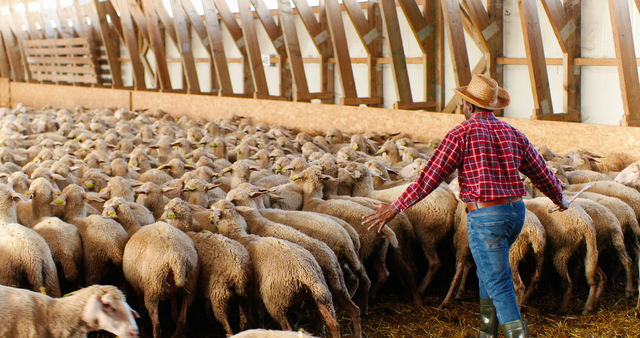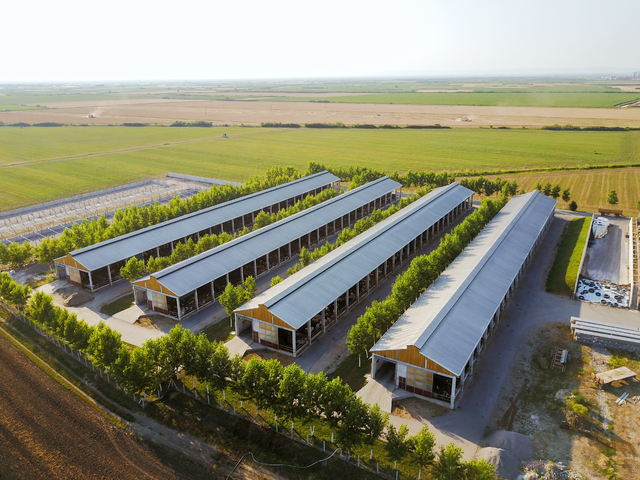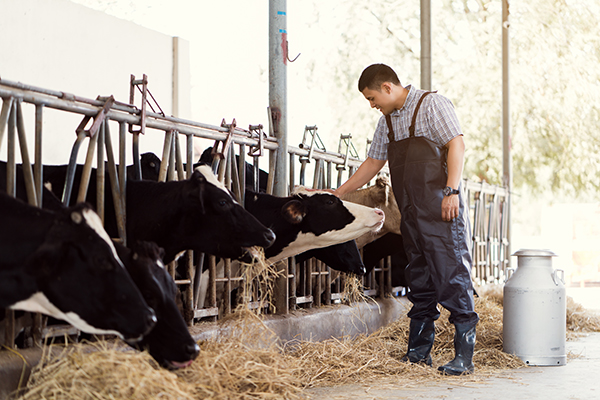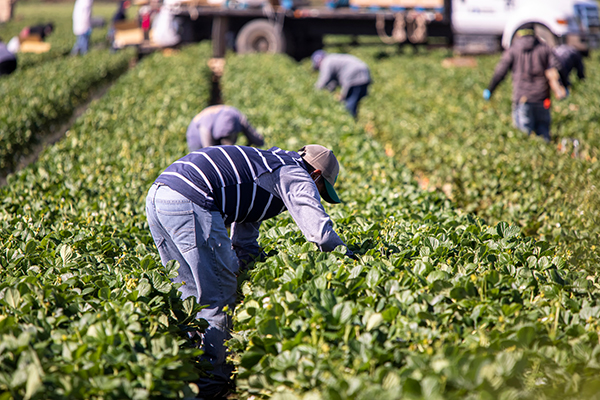
The latest job data provided by the U.S. Bureau of Labor Statistics shows that American workers are more willing than ever before to walk away from jobs and quickly switch employment.
The U.S. Labor Department’s Job Opening And Labor Turnover Survey shows that in August 2021, there were 10.4 million job openings and the quits rate rose to 4.3 million which is one of the highest in over two decades. The dire job market data shows the reality of a lack of workers to meet the needs of business owners nationwide.

Employers in the United States have historically depended on foreign temporary workers (often referred to as guest workers) to meet their workforce needs when labor shortages occurred. Guest workers were quite common during times of war when there was a severe shortage in the labor market.
The Bracero program was launched during World War II and was in effect until 1964. During the time, several million Mexican agricultural workers were brought into the country.
Nowadays, the Immigration and Nationality Act (INA) allows agricultural and nonagricultural workers to enter the country through the H-2A and H-2B visa programs.

H-2A and H-2B workers fill positions that do not require a great deal of formal education.
AW Labor Solutions understands the intricacies of the visa programs and can work closely with regulatory agencies to help employers obtain a legal workforce.
Any U.S. agricultural producer or employer can use the H-2A program to hire workers if there is a shortage of American workers to fill the temporary or seasonal positions.
Employer requirements for the H-2A compliance includes:
Frequently Asked Questions about the H-2A Visa
Let’s examine a few common employer questions and answers concerning the H-2A visa program.
How long will it take to process an H-2A visa?
At AW Labor Solutions, we know that one of your main concerns is time. You are probably worried about meeting the seasonal needs of your farm so you want to have a time frame for how long it will take if you decide to use workers via the H-2A program. When working with AW Labor Solutions, it can take from two to four months for an H-2A visa process. Rarely, it may take longer.
What agricultural employers qualify for H-2A workers?
You must own or operate an agricultural business and have a job opening that is either seasonal or temporary. The program also requires that you demonstrate that you have tried to successfully fill the job vacancy with a U.S. worker but failed. You can also show that there are simply not enough U.S. workers in your geographic area to meet your agricultural job needs.

How long does the H-2A visa stay valid?
The H-2A visa is a nonimmigrant visa that is temporary. It is typically valid for only one year but, on occasion, an extension is granted. Extensions are often given in one-year increments for up to three years with the H-2A visa being extended twice. However, at the end of the three years, the worker must leave and return to their country and remain there for at least three months before obtaining another H-2A visa.
How much does it cost an employer to sponsor a worker with an H-2A visa?
There are employer fees involved with the H-2A visa program.
The typical breakdown is as follows:
The above fees might change so please contact AW Labor Solutions for a list of updated H-2A visa fees. Additional fees must also be charged.
As an agricultural business owner, you are probably concerned with H-2A compliance with the U.S. Department of Labor. You’ll want to make sure you understand the H-2A regulations and that you have a firm understanding of your employer obligations.
The Cost of Non-Compliance
As an H-2A employer, it is imperative that you remain compliant because the cost of non-compliance is exceedingly high. You will incur fines associated with the program if you fail to comply. Fines often range from $1,658 to $16,579 for every violation. If there are multiple violations, then the fines can quickly start to add up. Also, the fines can often be multiplied by the number of workers impacted. Fines from a single investigation often exceed $100,000.
There are a multitude of violations that can occur concerning the H-2A. Below are several common infringements.
Employers who have open range livestock production with cattle, sheep or cots, commercial beekeeping, or itinerant sheep shearing face other special procedures for H-2A compliance.

The H-2B guest worker program is an ideal solution for businesses seeking temporary, intermittent, or seasonal workers to fill non-agricultural work positions in the landscaping, retail, food packing, forestry, construction, or restaurant service industries.
The initial creation of the H-2B Visa program was focused on meeting the labor needs of hospitality, seasonal construction, landscaping, carnival, retail businesses, resorts/restaurants, and manufacturing by creating a pool of workers. In some situations, caregiving professionals are also allowed into the U.S. via the H-2B visa program.
Each year, there is only a limited number of H-2B workers allowed to make use of the nonimmigrant visa program. The application process requires great care when completing the required paperwork and the application must be submitted early to give you the greatest edge of possible approval.
The H-2B visa program is a fantastic way for employers to gather a workforce but the application process is not without problems and can be very time consuming. However, businesses working with a recruiting service like AW Labor Solutions can help streamline the process, assist in meeting the regulatory requirements, and reduce the headaches.
H-2B Visa Program Regulatory Requirements
Any employer who wants to fill temporary non-agricultural job positions with H-2B visa holders must meet the program’s regulatory requirements.
With the H-2B visa, the worker can stay in the United States working for a maximum period of three years. Once an H-2B visa holder has stayed for three years, they must depart the country and remain outside the U.S. for at least three months before requesting readmission as an H-2B visa holder again. With the H-2B visa, employers don’t have to worry that the worker can stay for only a fleeting time and then face deportation.
The length of time that an H-2B visa holder can stay varies based on the employer’s need. In some cases, the H-2B visa holder might only stay a few weeks, but in other situations they can stay for several years. It all depends on the job.
Spouses and Children
With the H-2B visa, the visa holder’s spouse, and minor, unmarried children under the age of 21 can also enter the United States using an H-4 visa.
Employers Applying for the H-2B Visa
With the H-2B visa, the foreign national cannot actually apply for the visa and enter the United States to work. Instead, they must depend on a prospective employer filing the necessary paperwork to apply for the visa so they can enter the country.
Qualification for an H-2B Visa
In order to hire workers using the H-2B visa program, they must establish the following qualifications:
Below is a brief overview of the steps needed to obtain H-2B Visa holders to fill your labor needs.
The above concise steps might seem straightforward but they’re actually complex. In addition, only 66,000 visas are issued each fiscal year which takes place between the first and second half of the year. It is imperative that you time your applications process correctly. Also, even with a cap, in some situations an employer can still go forward with the recruitment process due to exemptions.
If, after review, the CNPC decides that your H-2A application does not meet the required criteria, a denial will be issued. The Final Determination letter will outline the reasons for your denial, and give you seven days to request a hearing. If you are denied, you must still retain all the paperwork for at least three years from the date of the denial for your own records.
Ongoing H-2B Employer Requirements
After an H-2B visa is granted then an employer is required to notify the USCIS in two days if the following should occur:

H-2B Compliance
As with the H-2A, the employer must remain compliant with the H-2B visa. The cost of non-compliance can be exceedingly high due to the fines incurred. An H-2B employer who is found to be in non-compliance could face a fine of $6,000 per violation. Also, failing to pay an employee properly is categorized as its own violation. It is not unusual for an employer to face fines that exceed $100,000 because it does not take long for them to add up.
There are a bevy of violation types. Below is a list of the few of the most common:
Frequently Asked Questions About the H-2B Visa
How long does the H-2B process take?
The H-2B visa process can take from 60 to 120 days to complete. Typically, applicants whose visa petition was submitted on the 1st of January can start working in the U.S in June.
Can an H-2B visa holder work two jobs?
No, an H-2B visa holder cannot have a second job. They can only work for the employer who filed the H-2B visa position. Securing a second job is a direct violation of the H-2B nonimmigrant visa policy.
How much does a H-2B visa cost?
As of January 2021, the USCIS charges a processing fee of $460 for an H-2B petition. Certain other fees are also typically required. AW Labor Solutions can help employers better understand the fees involved in the H-2B visa petition process.
Can an H-2B visa holder get a green card?
Your H-2B visa lets a foreign national work in the U.S. for the employer who has made the visa petition. The H-2B is a temporary nonimmigrant visa and does not allow the worker to gain permanent U.S. residence. The worker can stay only as long as the job lasts (up to three years), and then must return to their home country for 90 days before reapplying for another H-2B visa.
However, in some situations it is possible to become eligible and obtain a green card while working and living in the U.S. The visa holder will need to seek the assistance of an immigration attorney to discover their options.
What is the latest on the H-2B visa?
As mentioned, the cap can be lifted in certain circumstances on the H-2B visa. On May 25, 2021 the Department of Homeland Security along with the Department of Labor issued a temporary rule which increased the cap on the H-2B nonimmigrant visas allowing up to 22,000 visas through the end of the fiscal year. As an employer, if you work with a recruitment agency like AW Labor Solutions, you’ll be kept up to date on such changes.
How do I become a H-2B sponsor?
If you are an employer that wants to qualify as an H-2B sponsor, then you’ll need to meet the following requirements:
Conclusion
If you own an agricultural business, then the H-2A visa program might be the ideal solution to ensure that you can meet your seasonal or temporary labor needs. You’ll want to contact H-2A agents USA based such as the AW Labor Solutions, to help you navigate the visa petition process.
Nonagricultural business owners who are struggling to meet their labor needs will want to explore the H-2B visa program.
Contact AW Labor Solutions to learn more. We partner with businesses to ensure you get the labor and assistance you need for agricultural and nonagricultural positions. Our experienced team knows the H-2A and H-2B visa process to ensure compliance. We can help you grow your business!